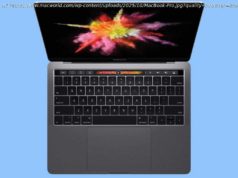Some had guns and some carried sticks and shields. Some carried homemade pepper spray, and mace. But one thing nearly everyone on all sides carried: a camera…
Some had guns and some carried sticks and shields. Some carried homemade pepper spray, and mace. But one thing nearly everyone on all sides carried: a camera. There were television cameras, DSLRs, 360-cameras and, most commonly of all, simple smartphones.
It was the one constant in the crowds of yesterday’s showdown between politically emboldened white nationalists and counter-protesters in Charlottesville, VA. The streets were full of raised cameras documenting the sad and scary events unfolding from every angle, often in real-time. In an event like this, spurred on by racist and xenophobic national discourse from prominent political figures and once-fringe media properties, violence seemed inevitable — or at very least, extremely likely.
As such, it’s hard to see a downside to ubiquitous, first-hand documentation. It presents a record of action and insight into violence that might otherwise disappear into the mob. “Sunlight is said to be the best of disinfectants; electric light the most efficient policeman.” It’s one of those quotes that’s been run through the ringer and co-opted by all sides of the political spectrum since Supreme Court Justice Louis Brandeis penned it more than 100 years ago. But the idea is still a powerful one. Transparency is our best tool against oppression, and technology can be a powerful means to that end.
Take the recent example of police body cameras. Most (many officers included) have embraced the technology for its potential to shed light on cases of police misconduct. And indeed, studies have shown that the mere existence of these cameras has had a positive effect in the policing community.
A study out of Cambridge University late last year marked a 93-percent drop in complaints against officers after cameras were introduced. People tend to behave better when they’ re being watched. Once cameras are introduced, the halo effect continues, even when they’ re no longer present, a phenomenon researchers refer to as “contagious accountability.”
All good news, and a great argument for the presence of video documentation in tense moments. But let’s focus on the “accountability” part of “contagious accountability.” As we have informed discussions about the role of technology in our lives, let’s not forget the fact that the mere presence of technology does not immediately equal accountability. That, after all, is in our hands, not the technology we employ. All the videographic evidence in the world won’ t hold guilty parties responsible.
If the point weren’ t already clear enough, we’ re forced to keep learning it time and again, most notably in the case of several recent police shootings. Tamir Rice, Eric Garner, Philando Castile — all examples of graphic death caught on video, which ultimately seemed to have little impact on the verdict of the officers involved in the shootings. In all of the above cases, video furthered the outrage of unwarranted death, but outrage and accountability are two different things, entirely.
This is important to remember as the political temperature of the country reaches a boiling point. Yesterday’s events, sadly, were not an isolated incident. They may have been the most egregious example we’ ve seen in recent memory, but things could get worse before they get better.
And technology, sadly, has undoubtedly played a role in this. Social networking echo chambers and the fragmentation and polarization of media platforms are powerful amplifiers of heated political rhetoric that have emboldened hate groups to march in the streets.
In a time when all of these things converge to embolden individuals to take to the streets and spread messages of hate no longer shrouded in the hoods and robes of their forebears, technology can play an important role in shining a light on those involved. Video appears also to have played a role in the apprehension of a suspect accused of killing a 32-year-old woman by driving his car through a crowd of counter-protesters at the event.
But let’s not forget that technology is politically agnostic. While it’s true that video can be edited or suppressed to tailor it to one’s political ends, technology in its purest form has no allegiance to belief systems or country. We are the ones who imbue it with meaning, and we are the ones who must make sure that those engaged in violence are held responsible for their actions.
All of the video evidence in the world won’ t convict a person of wrong doing. As a nation in which the legal process is, at least, in theory, in the hands of its people — that ultimately falls on all of us.






